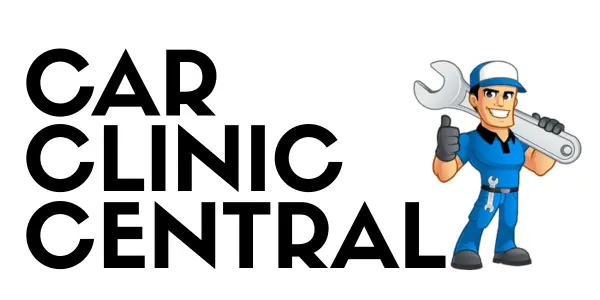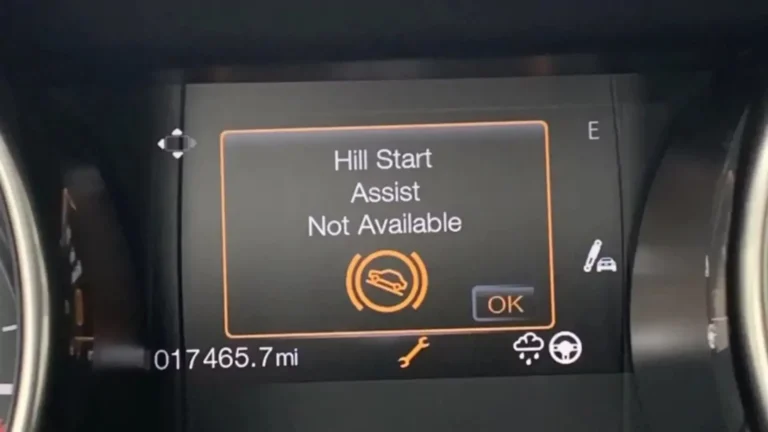Honda B17 Service: Checklist, Cost, and code info [2025]
In the world of automotive care, staying on top of your vehicle’s maintenance is crucial for longevity, performance, and safety. For Honda owners, the Maintenance Minder system simplifies this process by displaying specific service codes on your dashboard. One common code that many drivers encounter is the Honda B17 service.
This code signals a combination of essential maintenance tasks designed to keep your Honda running smoothly. Whether you drive a Civic, Accord, CR-V, or another model, understanding the B17 service code can help you avoid costly repairs down the line.
In this comprehensive guide, we’ll dive deep into what the service B17 Honda entails, its checklist, associated costs in 2025, and why it’s vital for your vehicle’s health. We’ll also explore how often you should perform it, whether you can tackle it yourself, and tips to maximize your Honda’s lifespan.
By the end, you’ll be equipped with the knowledge to make informed decisions about your car’s upkeep, ensuring it remains reliable for years to come.
What is Honda B17 Service?
The Honda B17 service is part of Honda’s innovative Maintenance Minder system, a sophisticated onboard computer that monitors your vehicle’s operating conditions and alerts you when specific services are due.
Unlike traditional mileage-based schedules, this system uses real-time data such as engine temperature, driving habits, speed, and ambient conditions to determine maintenance needs. This personalized approach ensures that your Honda gets attention exactly when it’s required, rather than on a rigid timeline.
Breaking down the code: “B17” is a composite of a main code (B) and sub-codes (1 and 7). The “B” indicates a more comprehensive service than a simple “A” code, which is just an oil change. Specifically, “B” calls for replacing the engine oil and oil filter, along with a series of inspections on critical components.
The “1” sub-code adds tire rotation to the mix, while “7” specifies the replacement of brake fluid. Together, these elements form a holistic maintenance package aimed at preserving engine health, tire wear, and braking efficiency.
This service code appears on a wide range of Honda models, including popular ones like the Honda Civic, Honda Accord, Honda CR-V, Honda Pilot, and even hybrids like the Honda Clarity. For instance, in a 2021 Honda CR-V, the B17 code might pop up around 30,000 to 45,000 miles, depending on driving conditions.
Honda introduced the Maintenance Minder in the mid-2000s to replace outdated interval-based charts, making it easier for owners to maintain their vehicles without over-servicing or under-servicing.
Why does Honda use this system? It’s all about efficiency and cost savings. By tailoring maintenance to actual usage—whether you’re a city commuter dealing with stop-and-go traffic or a highway cruiser—the system helps prevent premature wear.
For example, harsh conditions like dusty roads or extreme temperatures can accelerate the need for services, and the Maintenance Minder accounts for that. Ignoring the B17 code could lead to dashboard warnings escalating from “Service Due Soon” to “Service Due Now” or “Service Past Due,” potentially affecting your vehicle’s performance and warranty.
In essence, the Honda B17 service is a proactive reminder to address key areas that impact safety and reliability. It’s not just about fixing problems; it’s about preventing them, ensuring your Honda delivers the smooth, efficient drive the brand is known for.
Understanding Honda Maintenance Minder Codes
To fully grasp the B17 service, it’s helpful to understand the broader Maintenance Minder framework. Honda’s codes are divided into main items (A or B) and sub-items (numbers 0 through 7), each representing specific tasks.
- Main Code A: Simply replace the engine oil. This is the most basic service, often appearing every 5,000 to 10,000 miles based on oil life percentage.
- Main Code B: This is more involved, including an oil and filter change plus inspections of brakes, suspension, steering, fluids, exhaust, and fuel systems. It’s designed to catch issues early.
- Sub-Codes:
- 0: Replace rear differential fluid (for AWD models).
- 1: Rotate tires.
- 2: Replace air cleaner element, dust and pollen filter, and inspect drive belt.
- 3: Replace transmission fluid.
- 4: Replace spark plugs and inspect valve clearance; replace timing belt (if applicable).
- 5: Replace engine coolant.
- 6: Replace rear differential fluid.
- 7: Replace brake fluid.
For B17, you’re combining B’s thorough checks with tire rotation (1) and brake fluid swap (7). Other common combinations include A12 (oil change, tire rotation, air filters) or B123 (adding transmission fluid and filters). These codes ensure comprehensive coverage, adapting to models like the Honda Accord Hybrid, where electric components might influence intervals.
The system displays the code when oil life drops to 15% or lower, accompanied by a wrench icon. You can view details via the information display or i-MID screen. Resetting the code after service is straightforward—typically holding the reset button for 10 seconds—but it’s best done by a professional to ensure all tasks are completed.
Honda B17 Service Checklist
When the B17 code illuminates, it’s time for a structured checklist of tasks. This ensures nothing is overlooked, maintaining your Honda’s peak condition. Here’s a detailed breakdown:
- Engine Oil and Filter Replacement: Drain old oil, install a new genuine Honda filter, and refill with the recommended synthetic blend (e.g., 0W-20 for most modern models). This prevents sludge buildup and ensures proper lubrication.
- Tire Rotation: Swap tires front-to-back or in a cross pattern to promote even wear, extending tire life by up to 20%.
- Brake Fluid Replacement: Flush and replace the old fluid with fresh DOT 3 or DOT 4 brake fluid. This removes moisture that can lead to corrosion and reduced braking power.
- Brake Inspections: Check front and rear brake pads, rotors, calipers, and parking brake adjustment for wear or damage.
- Suspension and Steering Inspection: Examine tie rod ends, steering gearbox, boots, and suspension components for leaks, cracks, or looseness.
- Driveshaft and Boots Check: Inspect for tears or damage that could lead to CV joint failure.
- Fluid Levels Top-Off: Verify and adjust coolant, transmission fluid, power steering fluid, and windshield washer fluid.
- Exhaust System Review: Look for rust, leaks, or loose parts in the muffler, pipes, and catalytic converter.
- Fuel Lines and Connections Inspection: Ensure no leaks or deterioration, crucial for safety and efficiency.
- General Visual Inspection: Scan for any other issues, like battery condition or belt wear.
This checklist typically takes 1-2 hours at a service center. For models like the Honda CR-V AWD, additional checks might include the rear differential, but B17 focuses on the core items.
Items Included in Honda B17 Service
Delving deeper, the items in the B17 service are selected for their impact on safety and performance. The oil change uses Honda-specific filters to maintain warranty compliance and engine efficiency. Tire rotation addresses uneven wear from front-wheel drive bias in most Hondas. Brake fluid, being hygroscopic (moisture-absorbing), needs replacement every 3 years to prevent boiling under heavy use, which could cause brake fade.
![Honda B17 Service: Checklist, Cost, and code info [2025] 2 oil change - including item from honda b17 service](https://carcliniccentral.com/wp-content/uploads/2025/09/oil-change-including-item-from-honda-b17-service-1024x576.webp)
Inspections are preventive: Catching a worn brake pad early can save hundreds in rotor replacements. Steering and suspension checks ensure handling stability, while exhaust and fuel inspections prevent emissions issues or fire hazards. Genuine Honda parts are recommended for compatibility, though aftermarket options can save money if they meet OEM specs.
Honda B17 Service Cost in 2025
Costs for the Honda B17 service in 2025 vary by location, vehicle model, and service provider. On average, expect to pay $200 to $400 at a dealership, with independent shops offering it for $150 to $300. Breakdown:
- Oil and Filter Change: $50-$100
- Tire Rotation: $20-$50
- Brake Fluid Replacement: $80-$150
- Inspections: Often bundled, adding $50-$100 for labor
For a 2022 Honda Civic, it might cost around $250, while a larger CR-V could hit $350 due to more fluid volume. Reddit users report $300-$350 for Accords and $254-$315 for similar Acura models. Factors influencing price include labor rates ($100-$150/hour in urban areas), parts (genuine vs. generic), and any additional findings like pad replacements.
Dealerships often charge more for expertise and warranty preservation, but independents can be 20-30% cheaper. In high-cost areas like California, add 10-20%; in the Midwest, it might be lower. Always get quotes from multiple sources and check for coupons on Honda’s owner site.
How Often Should You Perform the Honda B17 Service?
Frequency isn’t mileage-fixed; it’s based on the Maintenance Minder. Typically, the “B” portion appears every 5,000-7,500 miles for oil, “1” with every oil change, and “7” every 3 years or 30,000-45,000 miles. For city drivers, it might come sooner due to idling; for highway users, later.
Monitor oil life percentage—service when it hits 15%. Factors like towing or extreme weather accelerate needs. Consult your owner’s manual for model-specific guidelines, like earlier intervals for turbocharged engines in the Civic.
DIY vs. Professional Service B17 Honda
DIY can save $100-$200 but requires tools (jack stands, filter wrench, fluid pump) and knowledge. Oil change and tire rotation are straightforward, but brake fluid flush needs care to avoid air bubbles. Pros: Cost savings, learning experience. Cons: Risk of errors voiding warranty, time-consuming (2-4 hours).
Professional service ensures accuracy, especially inspections. Dealerships use Honda-trained techs; independents offer flexibility. If under warranty, stick to certified shops.
Benefits of Regular B17 Maintenance
Adhering to B17 extends engine life by preventing oil degradation, improves fuel efficiency (up to 2-3 MPG), enhances safety via better brakes, and maintains resale value. It also avoids breakdowns, saving on towing and repairs.
Common Issues if B17 Service is Neglected
Skipping B17 can lead to contaminated oil causing engine knock, uneven tire wear needing premature replacement ($400+), or corroded brakes reducing stopping power. Long-term: Suspension failures or exhaust leaks, costing $500-$2,000.
Tips for Honda Owners
- Track codes via the HondaLink app.
- Use synthetic oil for better protection.
- Combine services to save time.
- Inspect tires monthly.
- Choose certified mechanics.
Conclusion
The Honda B17 service is a cornerstone of preventive maintenance, blending essential tasks to keep your vehicle safe and efficient. By understanding its components, costs, and importance, you can proactively care for your Honda, avoiding surprises.
Whether DIY or professional, timely service pays dividends in performance and peace of mind. Schedule yours today—your Honda will thank you with reliable miles ahead.
Related Article: GMC Terrain Years to Avoid
![Honda B17 Service: Checklist, Cost, and code info [2025] 3 Kevin Morgan](https://carcliniccentral.com/wp-content/uploads/2025/05/Kevin-Morgan-e1747133479795.webp)
Kevin Morgan is an ASE-certified automotive engineer and blogger with over 15 years of experience in vehicle systems design, performance testing, mechanics, and diagnostics. He is deeply passionate about automotive excellence. As a contributing author at CarClinicCentral, Kevin shares his expertise with enthusiasts, providing valuable market insights, updates, and trends.

![Honda B17 Service: Checklist, Cost, and code info [2025] 1 honda b17 service](https://carcliniccentral.com/wp-content/uploads/2025/09/honda-b17-service.webp)
![Power Steering Assist Fault: Signs, Causes, and Fixes [2025] 4 power steering assist fault](https://carcliniccentral.com/wp-content/uploads/2025/09/power-steering-assist-fault-768x432.webp)
![Mercedes A5 Service: Cost & Checklist [Detailed Guide] 2025 5 mercedes a5 service](https://carcliniccentral.com/wp-content/uploads/2025/08/mercedes-a5-service-768x432.webp)

![7EA Engine Code: Causes, Diagnosis, and Solutions [2025] 7 7ea engine code](https://carcliniccentral.com/wp-content/uploads/2025/09/7ea-engine-code-768x432.webp)
![Mercedes B5 Service: Cost & Checklist [Extensive Guide] 2025 8 mercedes b5 service](https://carcliniccentral.com/wp-content/uploads/2025/08/mercedes-b5-service-768x432.webp)
